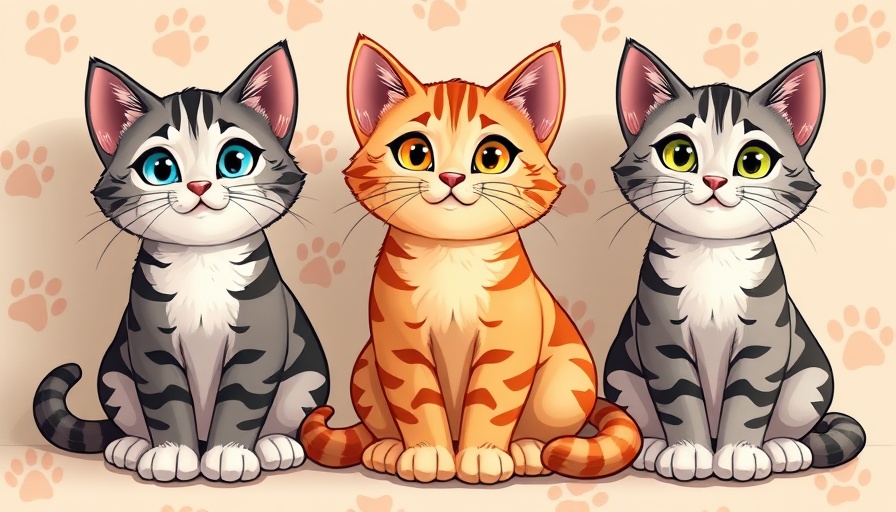
Foodies vs Picky Eaters: Understanding Your Cat's Unique Preferences
Welcome to the fascinating world of feline dining habits! Every cat owner has likely observed unique eating behaviors and preferences in their furry companions. In this edition, we explore the dichotomy of food-loving felines versus their more discerning counterparts, using stories from real-life Catsters that highlight their unique dining habits.
The Taste Buds of Cats: What Drives Their Food Choices?
Like humans, cats exhibit a wide range of preferences when it comes to food. Some, like Ivy, a self-professed "foodie," thrive on routine and specific brands. Their love for particular flavors makes meals an event, showcasing the importance of keeping a consistent diet for optimal health. Ivy’s unwavering loyalty to Whiskas wet food speaks volumes about the habits rooted in cats’ taste buds—once they find something they like, they tend to stick to it. This loyalty is often beneficial, simplifying feeding regimens and ensuring they receive a balanced diet.
On the other hand, some cats, like Milly, showcase a more laid-back attitude towards meals. Not overly motivated by food, Milly’s preference displays the independent spirit many felines possess. This raises questions about the emotional connections cats have with food and eating—are we feeding them to please our own expectations, or are we tuning into their individual needs?
The Importance of Nutrition: A Guide for Pet Professionals
As veterinarians, pet nutritionists, and trainers, understanding the nuances of feline eating habits is crucial for aiding pet parents in making informed choices. Encouraging pet parents to be aware of their cats’ preferences while also providing a balanced diet fosters a healthier lifestyle for their cats. For example, when introducing new foods, experts suggest a gentle transition process to avoid stomach upset and encourage acceptance of different diets.
It’s also imperative for veterinarians and pet nutritionists to guide owners on appropriate nutritional content, considering factors like age, health conditions, and lifestyle. By sharing insights on high-quality cat food options and advocating for nutritional diversity that caters to both picky and foodie felines, professionals play a vital role in the overall well-being of cats.
The Wellness Connection: How Feeding Habits Influence Cat Health
Cats that remain steadfast in their eating preferences, like Ivy, often exhibit robustness and satisfaction that can be linked to their established dietary routines. However, it’s essential to recognize the potential downsides of being too rigid; introducing a variety of food types can combat potential health issues related to over-dependence on one brand. This introduces the concept of "food rotation," which can help maintain interest in meal times while providing complete nutrition.
Being aware of potential health risks is crucial for advocates, rescue organizations, and pet accessory developers. They can inform pet owners about the benefits of gradual food transitions, ensuring that cats develop healthy and diverse palates that are essential for maintaining vitality.
Creative Solutions for Picky Eaters
For cat owners perplexed by their picky eaters, there are some innovative approaches to encourage dietary variety. One popular method involves mixing different food types or brands to coax cats into trying new flavors without sacrificing their comfort zone. As highlighted in Ivy's story, the struggle to get a feline to diversify can be real, but employing patience and creativity may lead to breakthroughs. Whether it's introducing raw food or using warming techniques to enhance scents, owners can experiment while keeping their pets' health needs in mind.
Fostering Emotional Connections Through Meals
Aside from nutrition, meals provide opportunities for bonding. Sharing mealtime can cultivate trust and affection, as demonstrated by Milly’s lighthearted breakfast ballet that highlights her elegance and independence. Engaging with cats during feeding times—like offering enrichment toys or interactive dining setups—can deepen these connections, promoting a sense of security alongside healthy eating.
Conclusion: Finding the Right Balance in Cat Diets
Understanding the different eating habits of cats is crucial in the journey of responsible pet ownership. Whether you're a veterinarian, a pet nutritionist, or a pet parent looking for insights, incorporating knowledge about cats’ unique preferences and diets can lead to healthier, happier feline companions. Embrace diversity in your cat's food, observe their preferences, and create a feeding routine that honors their individuality. Ultimately, finding the right balance can make all the difference in their physical and emotional well-being.
So the next time you’re at the pet store, take a moment to reflect on what your cat might truly enjoy and experiment with new flavors—who knows? You might be on the way to discovering your cat's new favorite dish!
 Add Row
Add Row  Add
Add 




Write A Comment